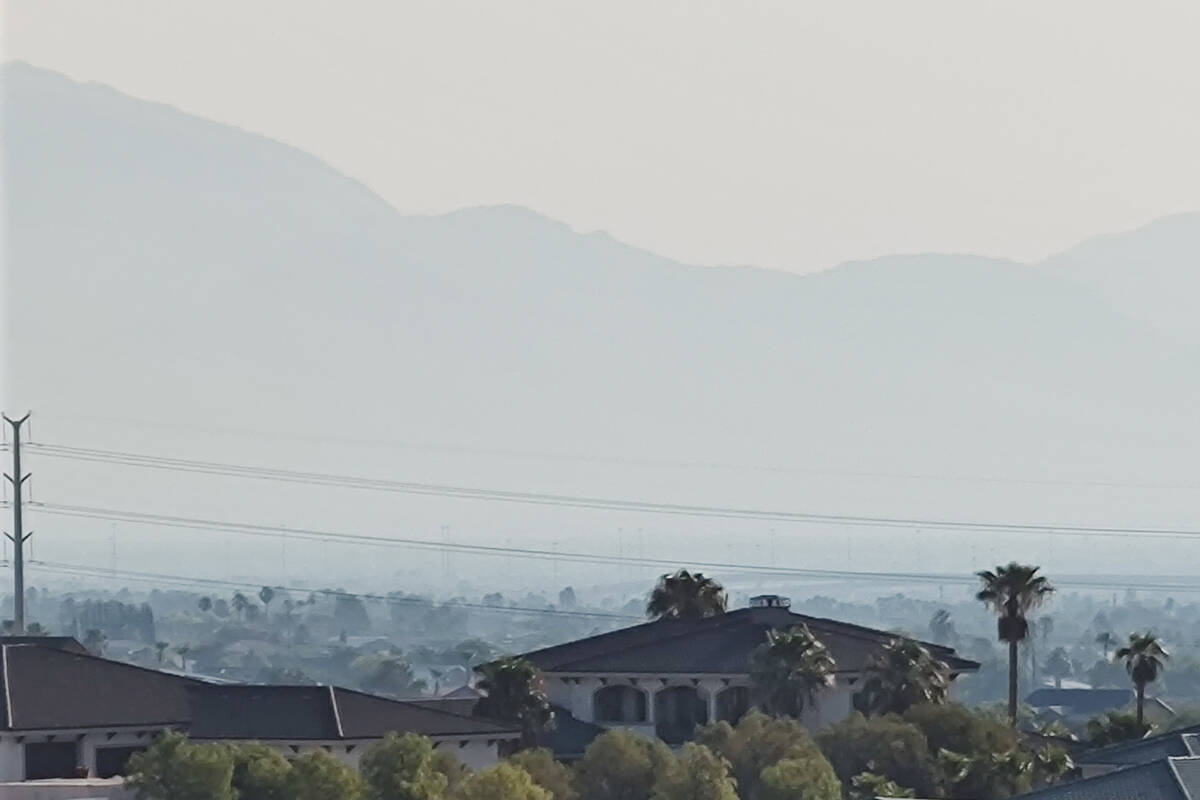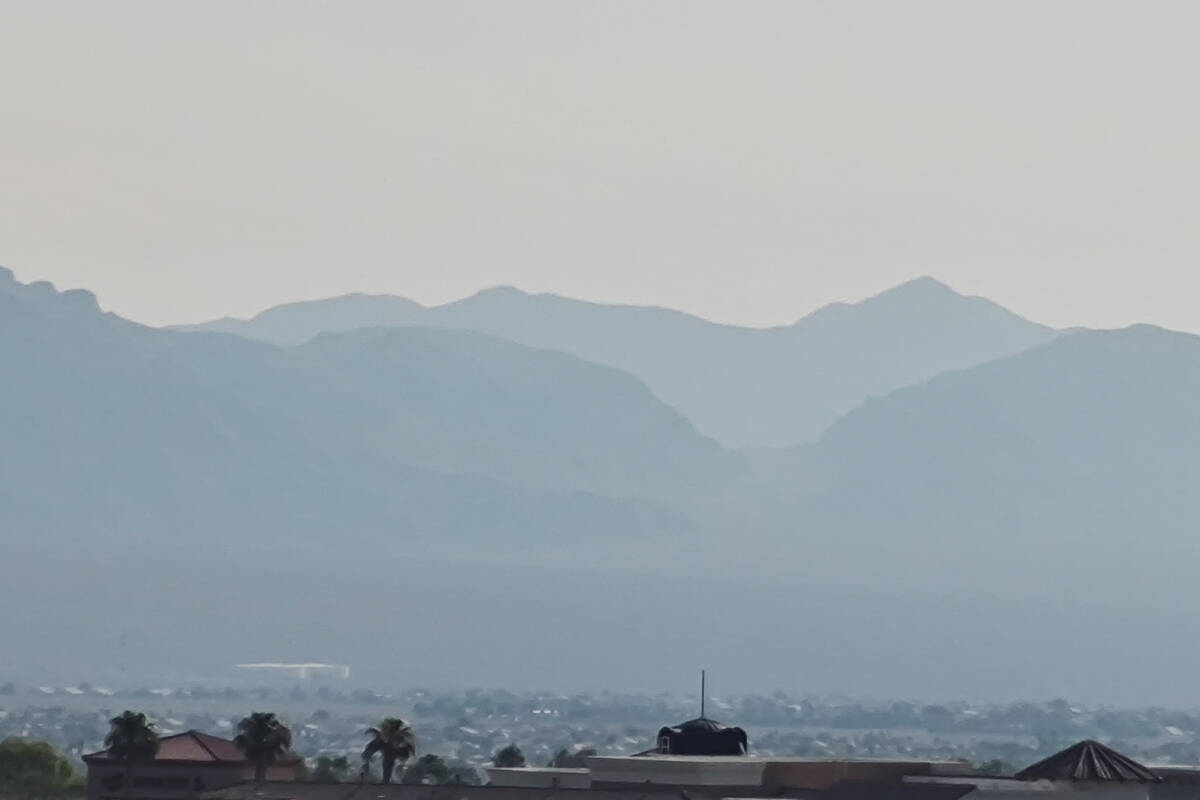Air quality improves after California wildfire smoke hits Las Vegas
Unhealthy air from California wildfires moved into the Las Vegas Valley and Southern Nevada on Friday, but air quality across Clark County was in “moderate” to “good” levels Sunday morning.
The Clark County Division of Air Quality issued a smoke alert for Saturday and Sunday because of wildfire smoke from California drifting into the valley.
Nearly all air quality monitoring stations were showing unhealthy levels for particulate matter Saturday morning. By noon, most stations had improved to the moderate category.
“It is smoke from the Trout and Borel fires in California,” National Weather Service meteorologist Jenn Varian said. “It should start to clear out later in the morning, but Pahrump will definitely get another round, and maybe the northern portions of the valley will see more.”
Pee-eww!
Las Vegas, smell something burning?The Borel & Trout fires in California have kicked off enough smoke to make it into the Las Vegas Valley. 🔥
Expect smoke to linger overnight before clearing in the morning (and potentially returning in the afternoon).#VegasWx pic.twitter.com/Ld0Vzut7gS— NWS Las Vegas (@NWSVegas) July 27, 2024
It’s also possible wind patterns might cause smoky air to stay in the valley for much of the day, Varian said.
The typical summer ozone is also a factor.
People are advised that it is best to stay indoors to avoid the elevated particulate matter in the air.
According to the Environmental Protection Agency, people who might be most sensitive to elevated levels of particulates and ozone include individuals with respiratory problems, cardiac disease, young children and senior citizens. Consult your physician if you have a medical condition that makes you sensitive to air quality conditions.
“This is our worst summer for ozone exceedances since 2021,” said Kevin MacDonald, an administrator for the Clark County Department of Environment & Sustainability. “This July alone has been our worst month for ozone since 2018, which was another bad year for wildfire smoke.
“While wildfire smoke creates particulate matter pollution, it also influences ground-level ozone formation. Couple that with other factors — stagnant weather conditions, transport of other pollutants from Southern California and homegrown ozone-forming pollutants — and you have what we’re having this month.”
Tips to limit exposure
Stay indoors when you see or smell smoke.
Keep windows and doors closed.
Limit outdoor exertion on days with high levels of fine particles in the air. Exercise makes you breathe heavier and increases the amount of particulates you are likely to inhale.
Consider changing your indoor air filters if they are dirty.
Forecast for rest of month
After nearly two months of elevated record temperatures, the rest of July will see highs near normal, the weather service said.
Saturday should see a high around 106 with breezy conditions. Southwest winds of 15 to 21 mph may reach gusts of 31 mph.
After Saturday’s high around 106, Sunday will be a few degrees cooler with winds slightly diminished. Gusts might reach 23 mph.
The official measuring station at Harry Reid International Airport reached a high of 111 on Friday, the 29th consecutive day with a high of 110 or more. That tied the 1940 record.
No moisture is in the forecast.
Highs are expected to climb a few degrees Monday and Tuesday. Overnight lows will be around 80.
The normal temperatures might not remain long, however.
The forecast for Saturday calls for a high near 110, and the weather service’s Climate Prediction Center is predicting a 70 to 80 percent chance of Southern Nevada having above average temperatures in early August.
Contact Marvin Clemons at mclemons@reviewjournal.com. The Associated Press contributed to this report.























